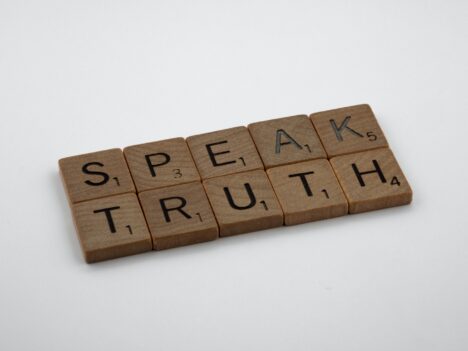Hope matters
June 13, 2024

Set your hope loose!” That’s the message from David Hamilton, author of How Your Mind Can Heal Your Body. He adds that we should hope for great things because, “Hope is healthy on many levels: mentally, emotionally and physically.”
On the physical aspect, he refers to a study conducted by Harvard University on 13,000 older adults that found “hope was associated with better physical health, reduced risk of all-cause mortality, fewer number of chronic conditions, lower risk of cancer and even better sleep quality”.
Going further, “It was also associated with better psychological wellbeing, including increased positive emotion, life satisfaction, greater social wellbeing and a greater sense of purpose. And it was associated with less stress.” These are helpful at any age.
Significantly, your hope can be “contagious” and transferable to others. “When someone loses hope, your hope can be infectious.” Or at least it may help someone struggling through difficult times to feel a little hope for themselves. It may “also take away some of the loneliness that comes from feeling hopeless”.
Hope matters. Hamilton encourages us to not be afraid to hope; to hope for great things; and to set our hope loose.
hope matters to life outcomes
In her research, Carol Graham—an academic and author of The Power of Hope—warns that, in the United States, there is a “crisis of despair”. She defines individuals in despair “as having no hope and being ambivalent about life versus death”. An additional problem is that they’re also “prone to believe fake news and related conspiracy theories and radicalisation”.
She gives a big-picture call for communities to play a role in “reducing despair and restoring hope” by identifying those who are vulnerable and helping them find hope. Her warning is this: “Given the damage that despair has already caused, including the lives of almost one million Americans in 2021 alone, its spread to the next generation is a daunting thought.”
She writes of “deaths of despair” (the term is used for suicide) which is a major problem in the United States and has caused a fall in the life expectancy within the country.

We who live outside the United States may want to shrug this off as something that doesn’t impact elsewhere. While the deaths of despair are not as serious an issue in Australia as in the United States, the Australian Institute of Health and Welfare in its General Record of Incidence of Mortality (appropriately known as GRIM) dataset has shown a “worrying rise in recent years”. Though suicide rates in countries like New Zealand have dropped in recent years, it’s still a significant social problem. Men are still twice as likely to commit suicide as women, with Maori men aged 15–44 and Pasifika men aged 15–24 being the most at risk, respectively.
a hope and despair continuum
Mandy Scotney conducted her hope research with individuals who were attempting to work on and resolve what is considered by many as one of earth’s most pressing problems—climate change. The issue they faced was simple: “It can feel like there is very little ability to put strategies into action to create the desired change when there are so many other forces at play.”
Scotney concluded from her study that hope is like the tide, “It ebbs and flows—it isn’t constant, and we shouldn’t expect it to be.” Her research showed that a sense of acceptance that some days we are full of hope, and other days “not so much”, builds resilience and the capacity to keep moving forward.
She adds, “Don’t be surprised that you’ll have days where hope feels elusive. Accept that we all have days like that and know that it’s not permanent—hope will flow again one day.” What surprises is her comment that, “You can find hope in despair.”
In her study of individuals tackling climate change she found “constant movement between hope and despair . . . and a conscious balancing of the two ends of this continuum is important in a helpful and healing approach to hope”.
And while she found these individuals “invested considerable energy into avoiding despair” . . . “despair powered their actions”. Scotney concluded, “Despair is not something to be avoided, but rather something to be managed. Participants do not shy away from acknowledging the facts or allowing themselves to face the potential for despair that their work involves. Instead, they use it as a springboard for action. Despair then becomes an ally of hope.”

Her report suggests that, “A sense of acceptance of how things are, having a vision of a better world and focusing attention on those areas we can facilitate that change, are the cornerstones of a hope that can be a driving force of self-care and wellbeing.”
hopeful thinking
Positive psychologist Charles Snyder is often cited when you research hope. He died in 2006, but his influence continues. He concluded that “hopeful thinkers achieve more and are physically and psychologically healthier than less hopeful people”.
He popularised an approach to hope that has become known as Snyder’s Hope Theory. He argued that there are three main attitudes/ approaches that make up hopeful thinking—what he called: goals; pathways; and agency. These individuals:
- Approach life in a goal-oriented way.
- Find different ways to achieve their goals.
- Believe they can instigate change and achieve these goals.
The reality is that stuff happens to all of us and “whatever talent or skill you may possess, hope is the state of mind that helps you navigate life’s twists and turns, and keeps you moving forward when times are tough. What’s more . . . hope isn’t simply a happy feeling—it’s a human survival mechanism, and we couldn’t thrive without it.”
When writer Polly Campbell was beginning to establish herself as a writer, she found this kind of approach incredibly helpful and advises: “Appreciate the setbacks and move through them. Hope is strengthened exponentially when you hit a setback and you persist despite it.
“Next time you run up against one, pay attention to what it offers you—a growth opportunity, a chance to learn something you need to know to accomplish your goals—then move through that challenge. We all know tough times are going to come. Maybe you are in one now.
“Hope reminds us that we can continue and, despite challenges, pursue greater possibilities. That’s a powerful feeling. One that keeps us moving instead of staying stuck in the despair. It worked for me early on in my career . . . I’m still self-employed, still writing. Still hoping.”

Research has found a link between humour and hopefulness with the findings supporting “the positive influence of humour on state hopefulness”. In a relatively simple approach, those involved were asked to fill out a Hope Scale before and after watching a video. Half of the participants watched a humorous video, the rest watched a “neutral” video—one without humour.
The “results indicated that there was a statistically significant increase in state hopefulness after exposure to a humorous video relative to a control group viewing a neutral video [without humour] . . . . The findings support the positive influence of humour on (the) state hopefulness.”
They also tell us that it has been “empirically demonstrated that humour can positively affect psychological and physical wellbeing, and that sense of humour is a major component of high-hope individuals”.
hope and mission
Researcher Brené Brown tells us, “Hope is not an emotion; it’s a way of thinking or a cognitive process. Emotions play a supporting role, but hope is really a thought process. . . . In very simple terms, hope happens when we have the ability to set realistic goals (I know where I want to go). We’re able to figure out how to achieve those goals, including the ability to stay flexible and develop alternative routes (I know how to get there, I’m persistent, and I can tolerate disappointment and try again). We believe in ourselves (I can do this!).”
You can do this!
In her best poetic voice, Victoria Safford calls us to our mission:
Our mission is to plant ourselves at the gates of Hope—
Not the prudent gates of Optimism,
Which are somewhat narrower.
Not the stalwart, boring gates of Common Sense;
Nor the strident gates of Self-Righteousness,
Which creak on shrill and angry hinges
(People cannot hear us there, they cannot pass through);
Nor the cheerful flimsy garden gate of
“Everything is gonna’ be all right.”
But a different sometimes lonely place,
The place of truth-telling.
Now’s the time to set your hope loose!








